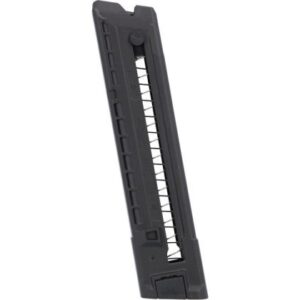Types of Bullets
- Full Metal Jacket (FMJ): A bullet with a soft core (usually lead) encased in a shell of harder metal. FMJs are known for their penetration and are commonly used in military applications.
- Hollow Point (HP): Designed to expand upon impact, hollow-point bullets are often used in self-defense and law enforcement due to their stopping power.
- Soft Point (SP): These bullets have a partially exposed lead tip, allowing for controlled expansion upon impact, making them suitable for hunting.
- Boat Tail (BT): Featuring a tapered rear end, boat-tail bullets are designed to improve aerodynamics and reduce drag, enhancing long-range performance.
- Wadcutter: A flat-fronted bullet used primarily in target shooting, designed to cut clean holes in paper for easier scoring.
2. Materials
- Lead: The most common material for bullet cores, lead is malleable and dense, providing good stopping power.
- Copper: Often used in FMJ and HP bullets, copper is corrosion-resistant and can enhance penetration.
- Steel: Sometimes used in budget ammunition or military applications, steel bullets are less common due to their hardness and potential to damage barrels.
- Tungsten: Used in armor-piercing rounds due to its density and hardness, tungsten bullets can penetrate tough materials.
3. Applications
- Military: Bullets designed for combat situations, often focusing on penetration and lethality.
- Law Enforcement: Ammunition used by police forces, which may prioritize stopping power and controlled expansion.
- Hunting: Bullets designed for various game types, emphasizing expansion and accuracy.
- Sport Shooting: Ammunition used in competitive settings, where precision and consistency are crucial.
4. Ballistics
- Internal Ballistics: The study of the bullet’s behavior inside the firearm, including the ignition of the propellant and the bullet’s travel down the barrel.
- External Ballistics: The study of the bullet’s flight path, including factors like drag, wind resistance, and gravity.
- Terminal Ballistics: The analysis of how a bullet behaves upon impact with a target, including penetration depth and tissue damage.
5. Legal and Safety Considerations
- Regulations: Varies by country and region, affecting the purchase, possession, and use of certain types of ammunition.
- Safety: Proper handling, storage, and usage of bullets and firearms to prevent accidents and injuries.
6. Historical Development
- Early Bullets: Initial use of lead balls in muzzle-loading firearms.
- Modern Advancements: Development of smokeless powder and innovations in bullet design for improved performance.
AIR GUN AMMO
$20.00 – $30.00
This product has multiple variants. The options may be chosen on the product page
